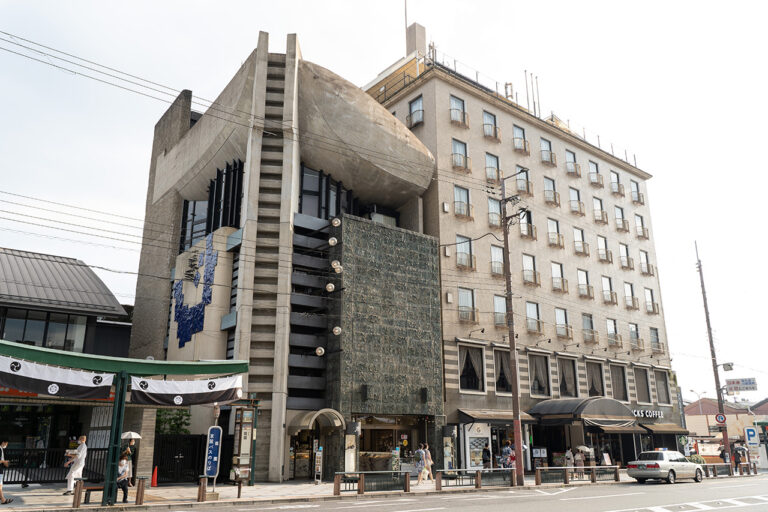
もうすぐ紅葉シーズン!祇園の隠れ家カフェ[ぎおん石...
PR
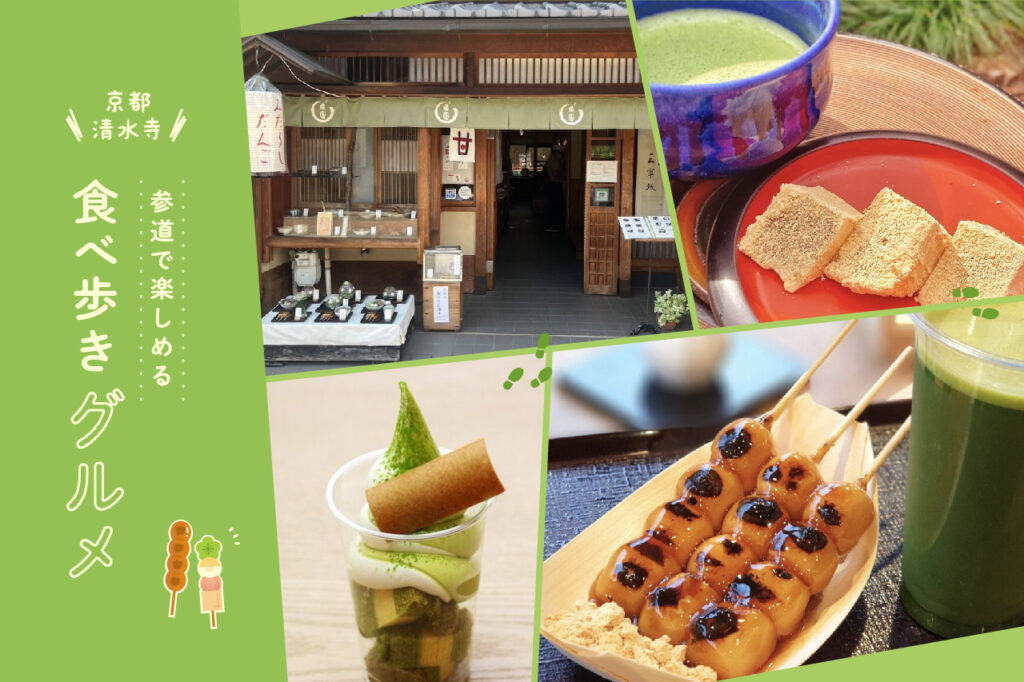

[When you visit Kiyomizu-dera Temple, don't you want to enjoy delicious gourmet food as well? The area around Kiyomizu-Dera Temple, a World Heritage Site in Kyoto, is full of gourmet restaurants that you can visit before or after your visit to the temple. For those of you who want to enjoy food while strolling around Kyoto, we will introduce a variety of spots recommended by our local editorial staff, including excellent sweets and matcha green tea, that you may want to stop by along the way! In addition to the famous Sanneizaka (Sannenzaka), Ninenzaka (Ninenzaka), and Ichinenzaka (Ichinenzaka), check out the information on Chawanzaka and Asahizaka, which are well known to those in the know! (TEXT/Yumi Matsumura, Airiko Takabayashi, EDIT/Moe Sawamura, Kanako Horike)
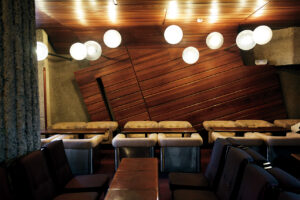
紅葉観光や祇園散策で知っておきたいのがゆっくり休憩ができるカフェ。街の喧騒を忘れてゆったりと過ごせる、おすすめの一軒。
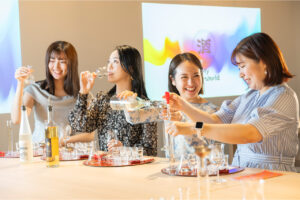
You can make your own original "blended sake (maisake)" by blending a wide variety of sake imported from all over Japan in your favorite combination.
[The approach to Kiyomizu-dera Temple is lined with various small and large slopes. Check the map and enjoy your stroll.
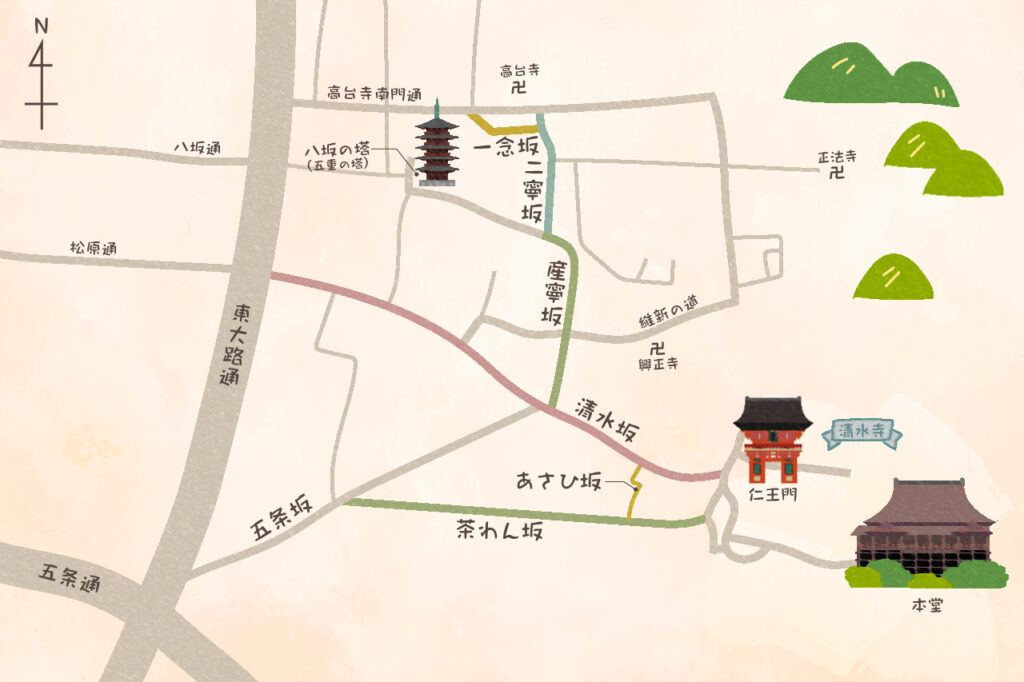

In this store, located in a traditional Japanese house that is over 100 years old, you can enjoy coffee while relaxing in the tatami room. The store is decorated with siren art made from Japanese paper, fabric woven using the same technique as Nishijin brocade, and hanging scroll art inspired by the Otowa Falls at Kiyomizu-dera Temple and the movement of water when brewing coffee, creating a cozy harmony of tradition and modernity.
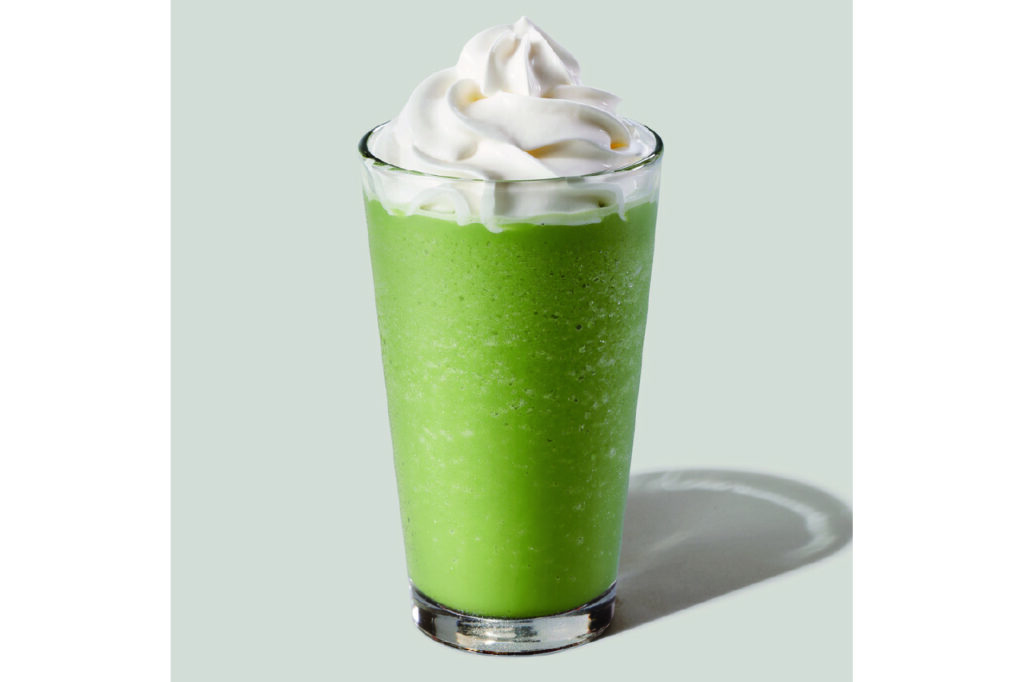
Matcha Cream Frappuccino® Tall size 600 yen. Richly flavored matcha powder blended with milk and ice for a refreshing taste.

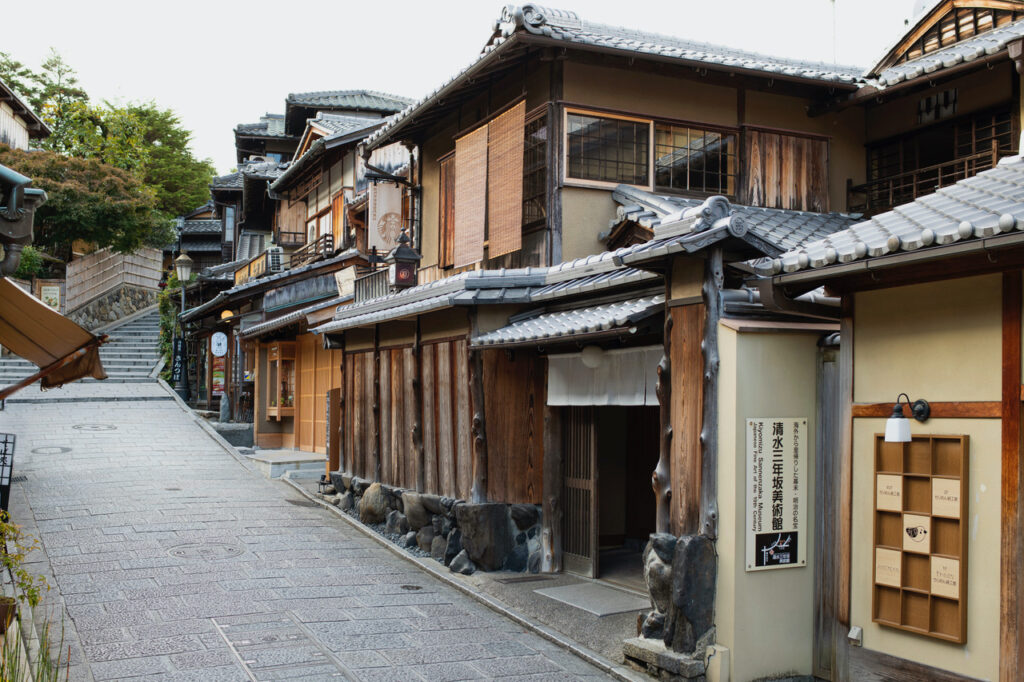
Photo courtesy of Starbucks Coffee Japan Co.

Eating and drinking space: Yes
MAP ishere
GOKAGO is a Japanese tea store that opened in 2023 on the approach to Kiyomizu-dera Temple. The name "GOKAGO" comes from the wish "to be protected by the blessings of Kannon, the Goddess of Mercy of Kiyomizu-dera Temple. The most popular drink, the thick matcha latte, has a deep flavor with the rich aroma and bitterness of Kyoto-grown matcha. It is a pleasure to have the matcha tea brewed right in front of you. The matcha doughnuts are made with matcha green tea to enhance the aroma and flavor before serving. Original blends of matcha and tea leaves, tea utensils (Kiyomizu-yaki), and tea utensils are also available for sale, making it easy to choose the right souvenir.
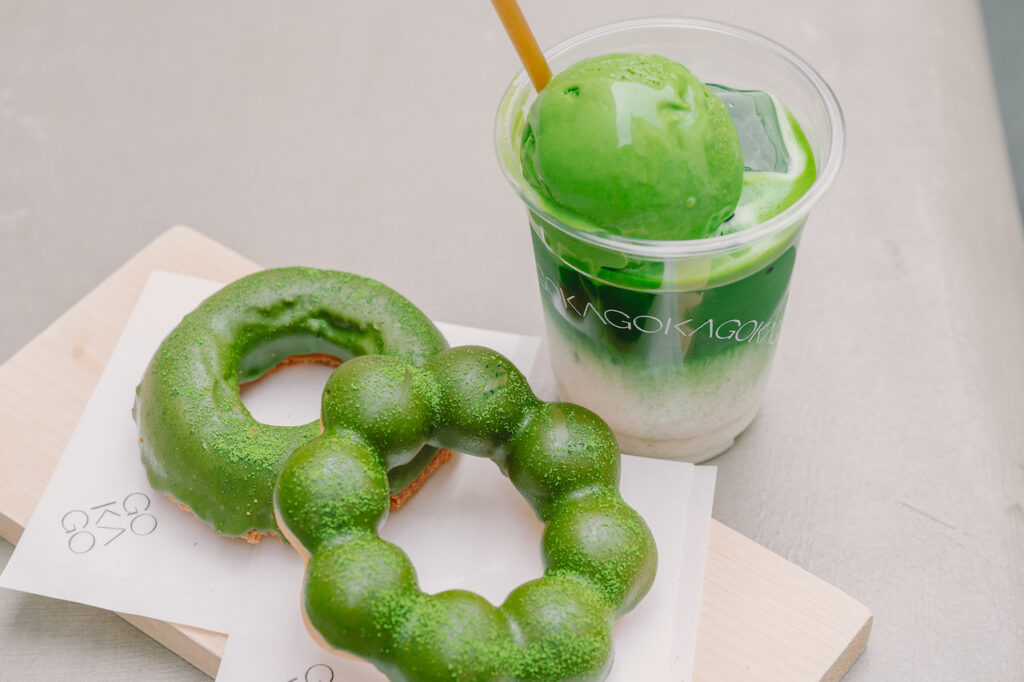
The rich Uji green tea latte 880 yen + rich green tea ice cream 350 yen, made with plenty of high-quality green tea blended for the latte. Try it with matcha doughnuts for 380 yen each.


Photo courtesy of GOKAGO

Eating and drinking space: Yes
MAP ishere
This is a sister store of the popular "Koto Imo Honpo" in Arashiyama, a takeout store specializing in sweets made from sweet potatoes. The lightly roasted dumplings and the mild sweet-and-sour sauce will surely become addictive. The large, visually pleasing dumplings are a perfect accompaniment to a stroll.

Aburi Mitarashi: 290 yen per dumpling. Three strands of mochi mochi mochi dumplings with a sticky texture make up a generous portion *Price will be changed from October 2025.


Photo courtesy of Tsukiagebijin

Eating and drinking space: Yes
MAP ishere
The strawbutter cakes are made using rare ingredients such as Japanese strawbark flour and wasanbon sugar made by traditional methods, and are kneaded according to temperature, humidity, and other conditions. If you tell them that you saw Leaf's article on eating and walking around Kiyomizu-dera Temple, you will be offered a free piece of the strawbaked rice cake.
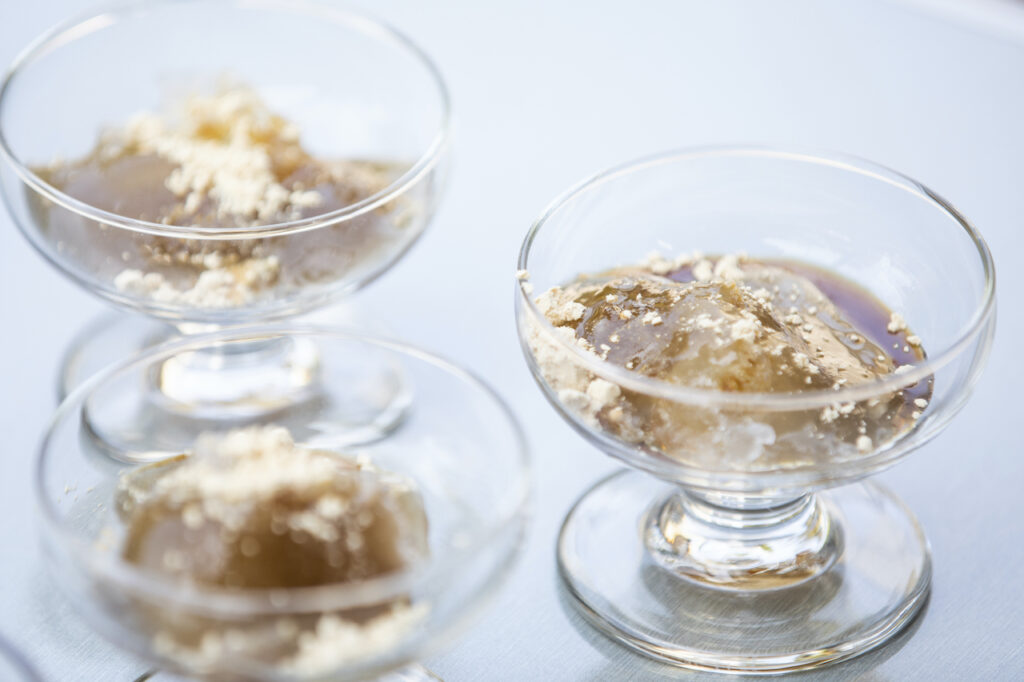
600 yen for a pack of 5 warabi mochi (bracken rice cakes). The rice cake is so soft that it seems to overflow when you lift it, yet it has a strong firmness.


Photo/Leaf KYOTO Editorial Department

Eating and drinking space/No
MAP ishere
Kyo-baamu is a classic Kyoto souvenir, a three-layer baumkuchen made of matcha green tea batter and soy milk batter. [Kyo-baamu Soft, a popular menu item at Kyo-baamu Shimizu, is a small piece of Kyo-baamu topped with a generous dollop of soft-serve ice cream. Only the finest ingredients are used to bake the baumkuchen, making it moist and tender. There are three flavors to choose from: green tea, soy milk, and mixed. Try it with a yatsuhashi bridge.
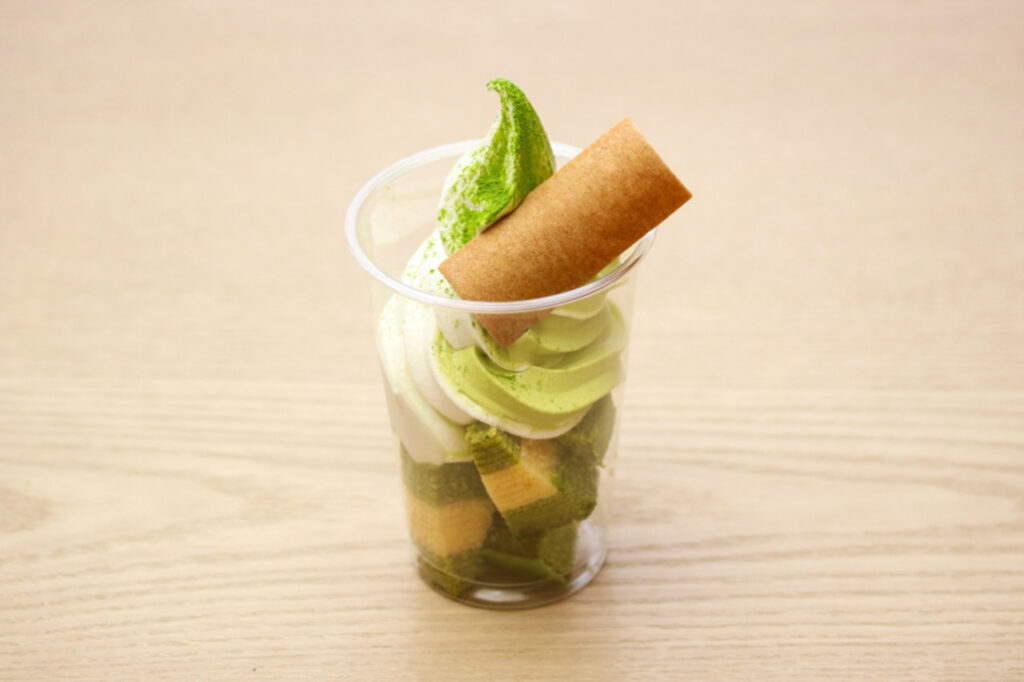
Kyo-baamu soft (mix) 670 yen. The flavors of green tea and soy milk spread out.

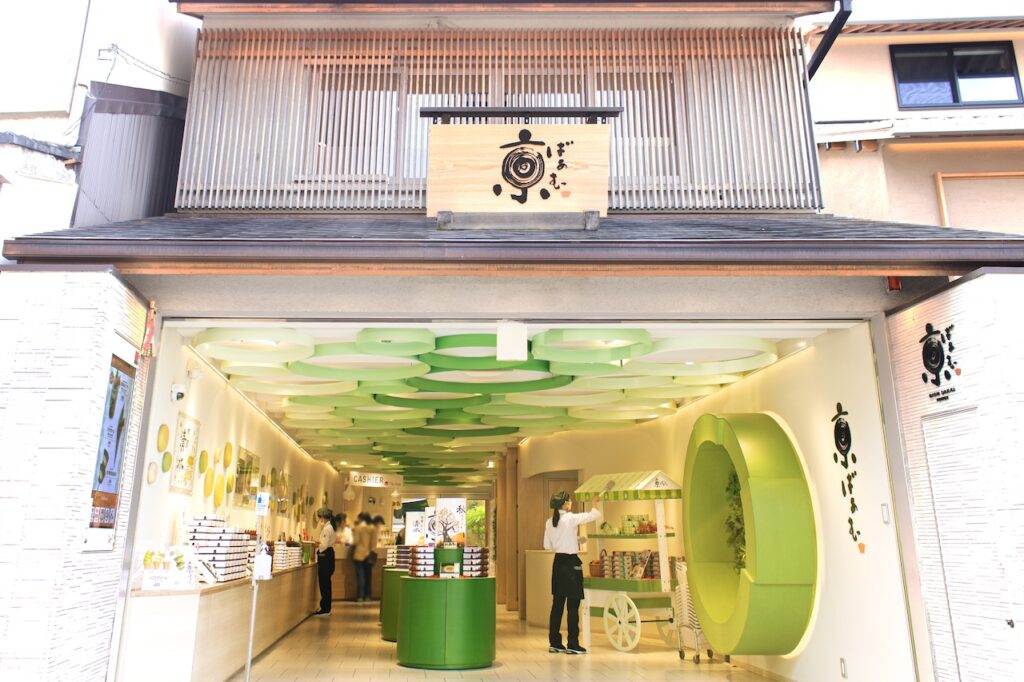
Photo courtesy of Biju Co.

Eating and drinking space: Yes
MAP ishere
Umezono Shimizu Branch, located on Sanneizaka, is the Shimizu branch of Umezono, a sweet shop founded in 1927 on Kawaramachi Dori. The specialty is the hot Mitarashi dumpling, a bale-shaped dumpling baked to a golden brown and covered with a sweet and sour mitarashi sauce. The dumplings are made in a size that is easy for even a maiko with a small mouth to eat. Shimizu Dim Sum, a set of Mitarashi dango with matcha green tea and a sweet taste, is also popular. You can spend a relaxing time in the Japanese-style room or on the terrace, so stop by during your stroll.

Mitarashi dumplings (530 yen for a pack of 5 dumplings (550 yen for in-store consumption)) with kinako (soybean flour) topping are also recommended. You can even watch the dumplings being baked!

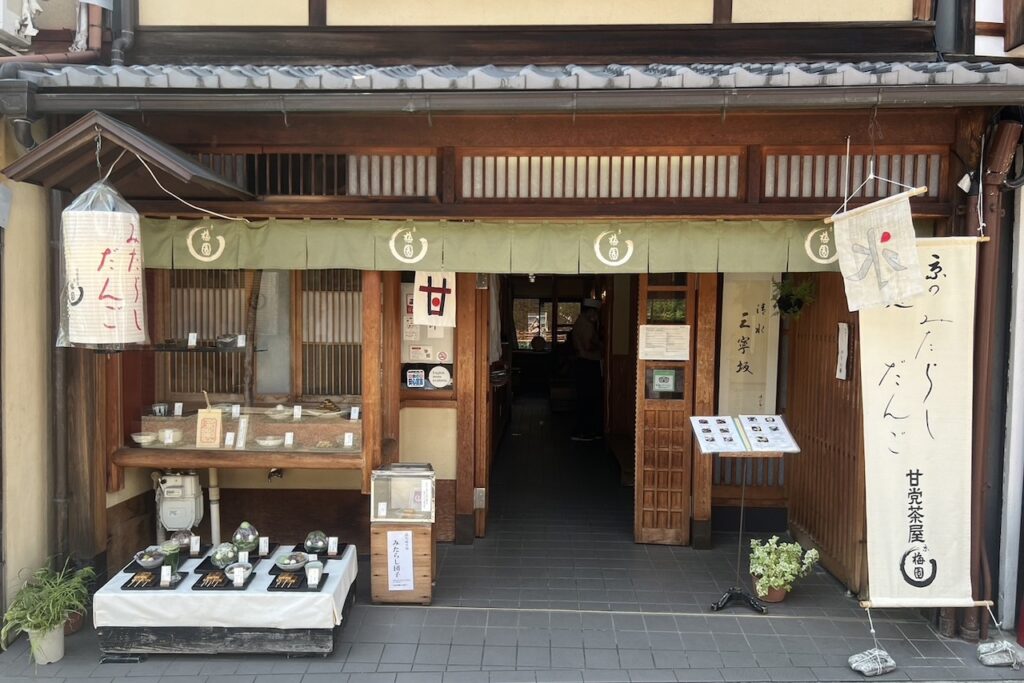
Photo courtesy of Umeen

Eating and drinking space: Yes
MAP ishere
Mitarashi dumplings, freshly baked unbaked dumplings with hot sauce, are characterized by their light sweetness. Sprinkled with soybean flour to taste, they are even more savory. Try it with the cool green tea Rakusui, which spreads the flavor of high-quality matcha green tea.
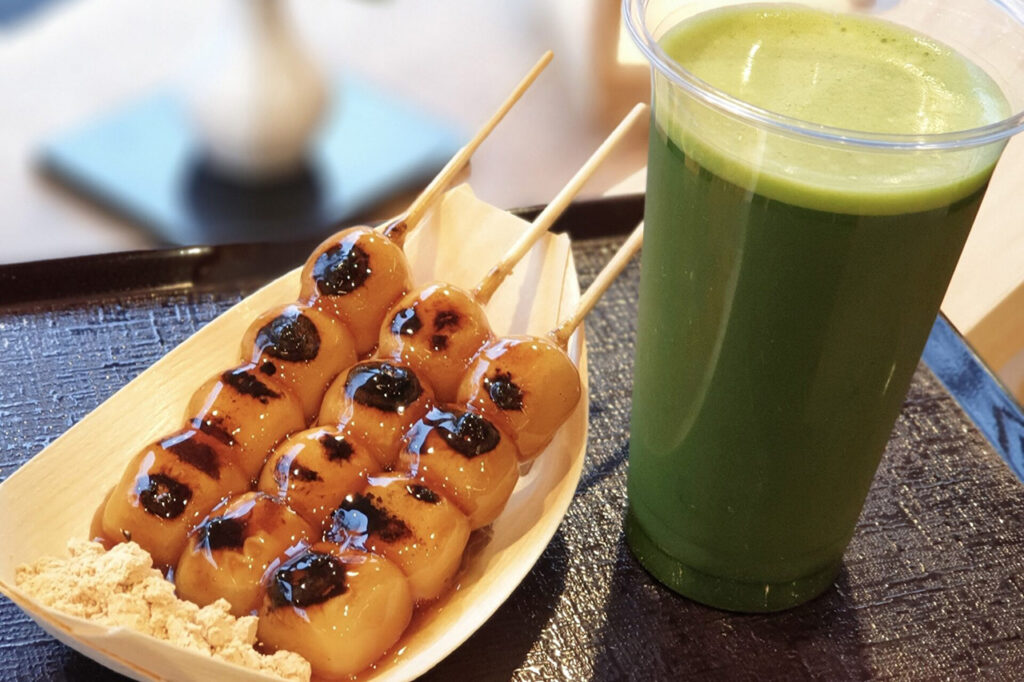
Mitarashi Dango and Cool Matcha - RAKUSUI's Mitarashi Set for 700 yen. The freshly made dumplings are small and not too sweet, but very tasty.

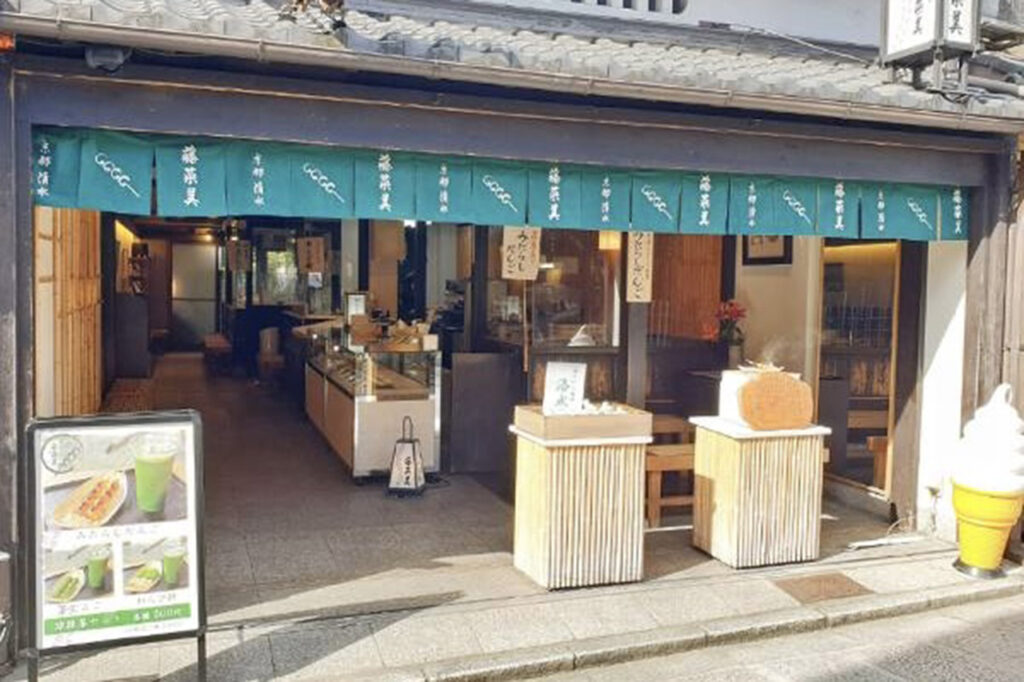
Photo courtesy of Nami Fuji

Eating and drinking space: Yes
MAP ishere
[At The Unir Coffee Senses, you can enjoy specialty coffees for barista competitions and other events purchased from coffee farmers around the world, as well as food and sweets made with the utmost care. Enjoy an elegant time in the courtyard of this atmospheric Kyoto City-designated traditional building, which is over 100 years old, or in the sophisticated Coffee Senses Bar, where the theme is "En (circle).
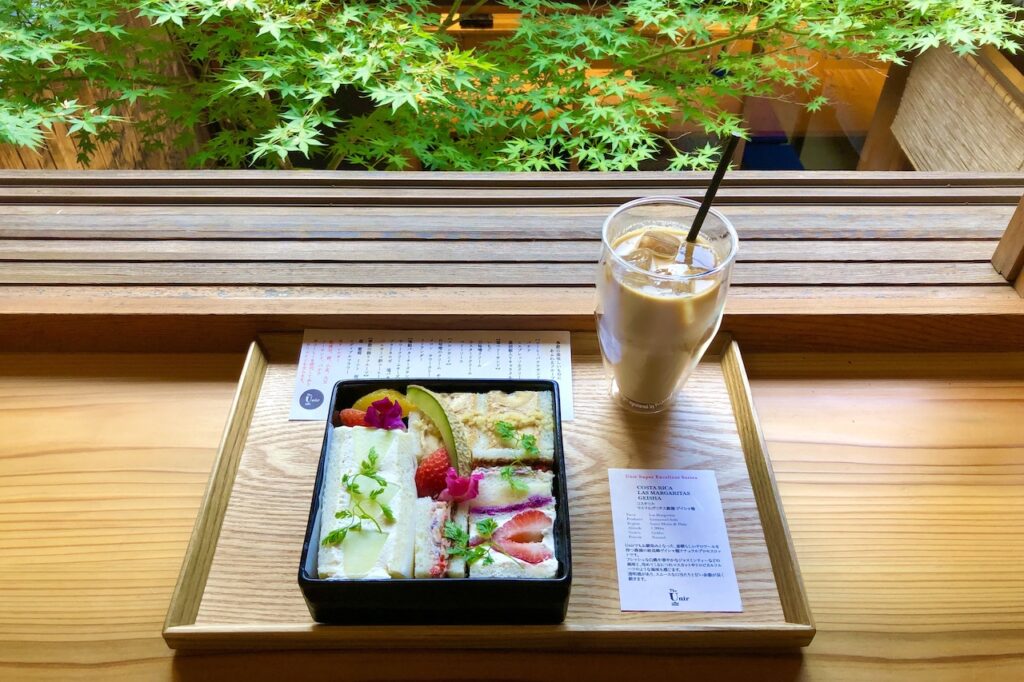
A variety of specialty coffees are available from 600 yen per cup. The popular fruit sandwich heavy with seasonal fruit and special cream is 2,550 yen, and the cream is filled with espresso, white miso, olive oil, and various other hidden flavors!

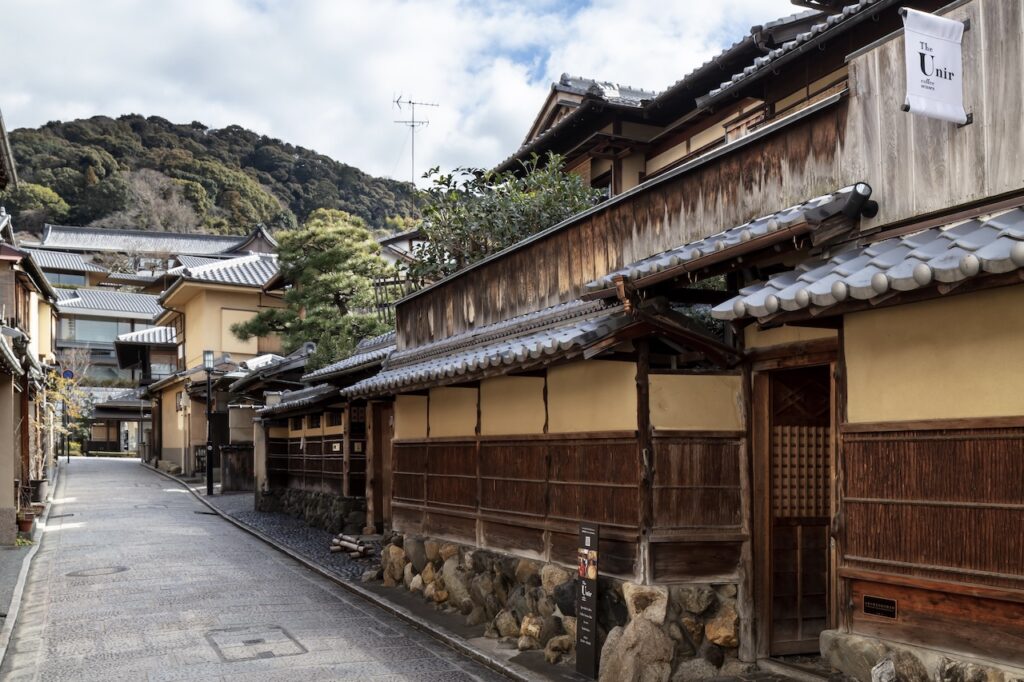
Photo courtesy of The Unir Coffee Senses

Food and beverage space: Available *Reservations required for VIP room
MAP ishere
Sohonke Yudofu Okutanshimizu, established in 1635, offers a menu featuring dishes made with soy milk and okara (bean curd) produced in the process of making homemade tofu. Tofu manju, a popular snack, is a traditional country-style manju dough with soy milk added, and the bean paste is filled with seasoned okara (bean curd) chopped with plenty of vegetables. The moist and gentle taste is spreadable. Only here can you enjoy it freshly made and hot.
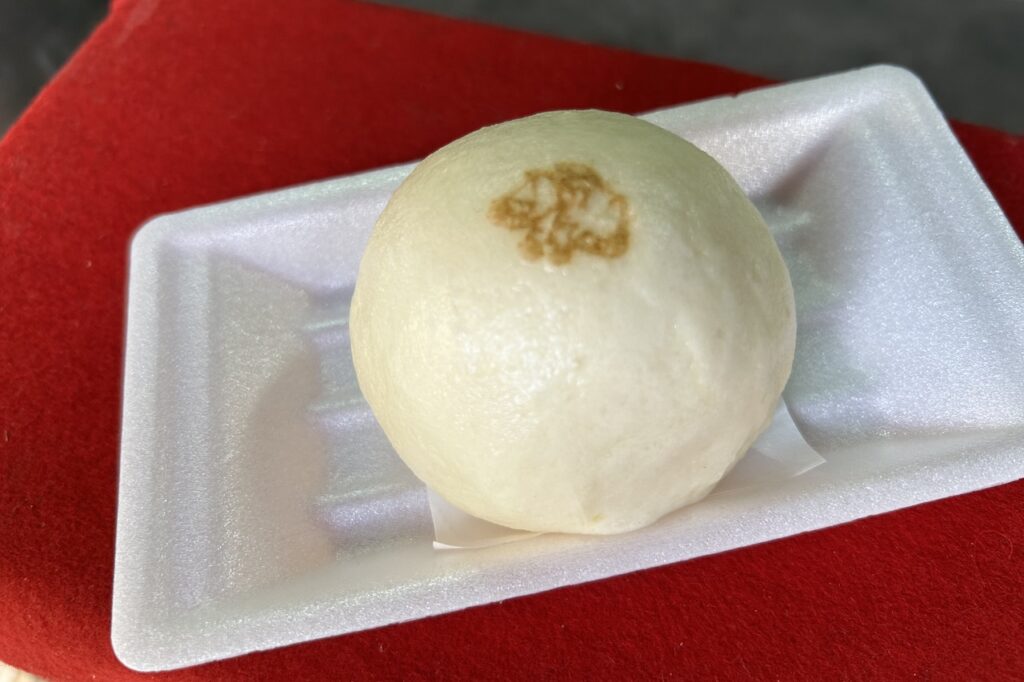
Tofu manju (bean curd bun) 250 yen. A healthy eating menu made by a tofu shop is a delight. Take-out can be ordered at reception.

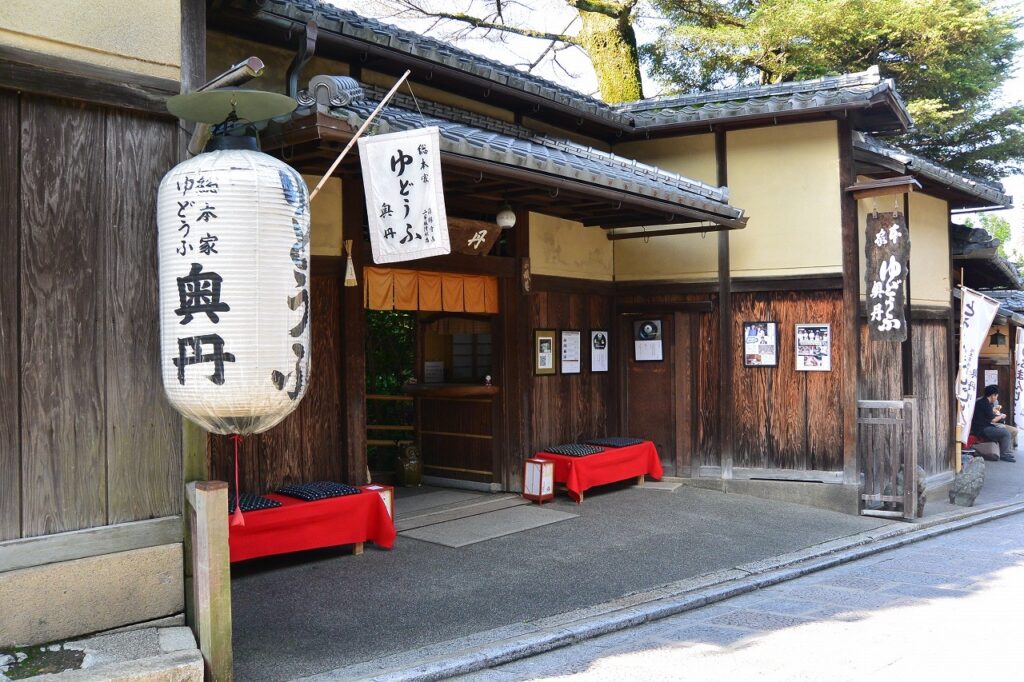
Photo courtesy of Sohonke Yudofu Okutan Shimizu

Eating and drinking space: Yes
MAP ishere
The Warabimochi of "Kyo Ama Bun-nosuke Chaya" is made from carefully selected strawbutter and has a unique and powerful stickiness, but when you put it in your mouth, it melts in your mouth and you can enjoy its mellowness and moderate firmness. The slightly fragrant Nikki and the sweetness of the Kyoto soybean flour are a perfect match, using a method inherited from the founder, Bunnosuke Katsura. Enjoy the traditional taste in a Japanese-style space near Yasaka Pagoda.
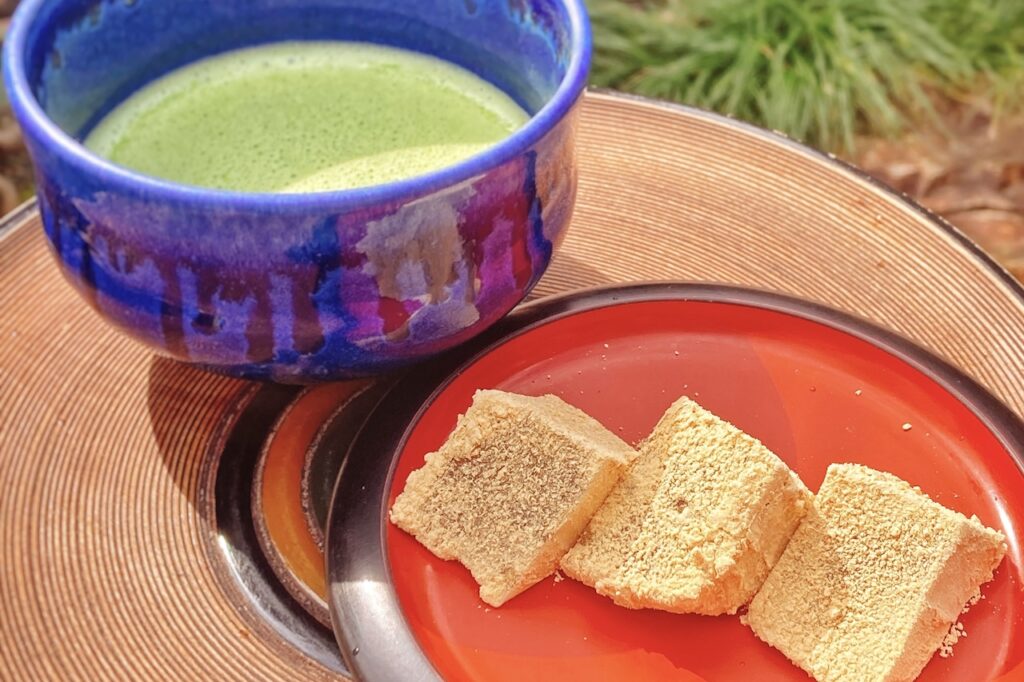
The rich aroma and bitterness of the osu is perfect with the strawbimochi.

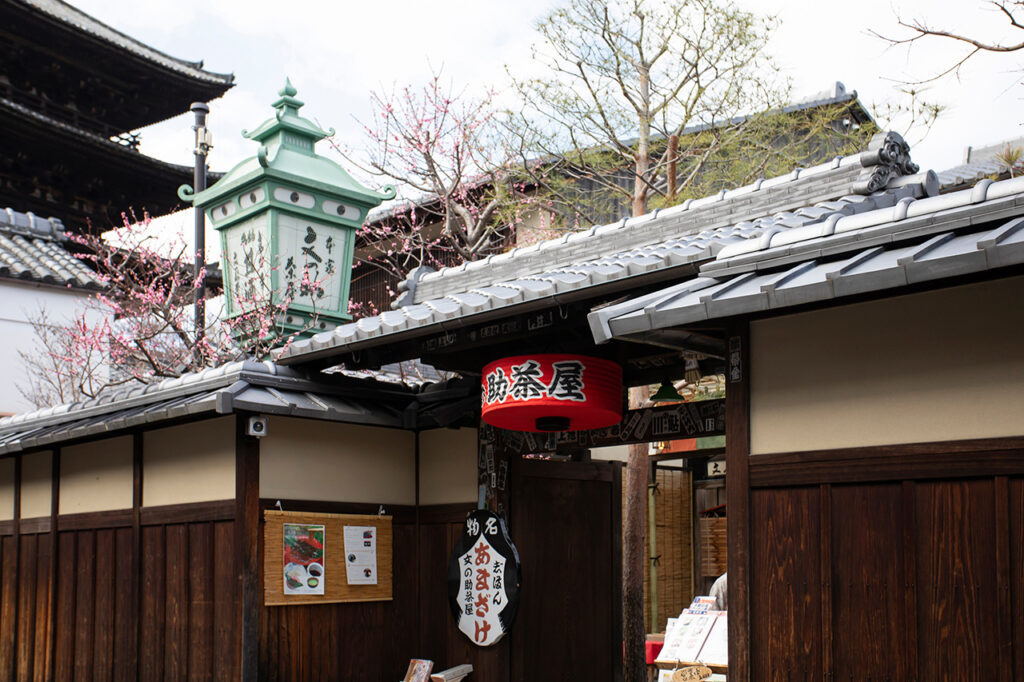
Photo courtesy of Bun-no-suke Tea House

Eating and drinking space: Yes
MAP ishere
This is a collaboration store between Itoken, a long-established Japanese confectionary store established in 1864, and the Kyoto textile brand SOU・SOU. A pop Japanese space with the SOU-SOU style spreads out in the streets lined with traditional buildings. Recommended for takeout is the wagashi on skewers, a luxurious, Kyoto-style item that can be easily enjoyed with one hand while enjoying the Kami-no-gashi used in the tea ceremony.
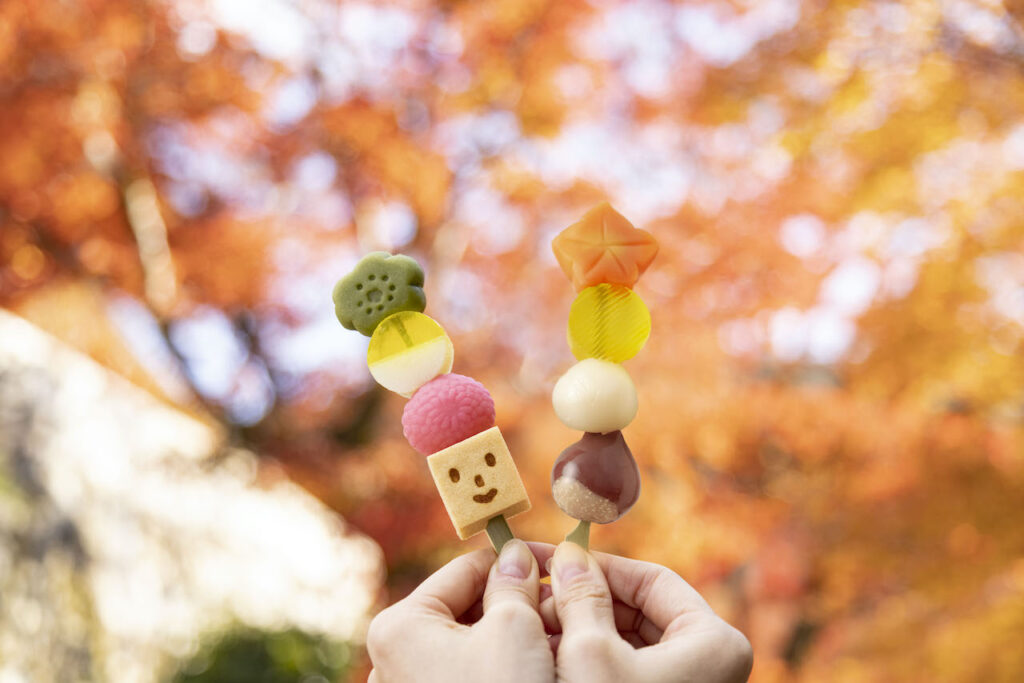
Traditional Japanese sweets made by hand on a single skewer for 500 yen. Choice of two types: seasonal (fall) and regular.

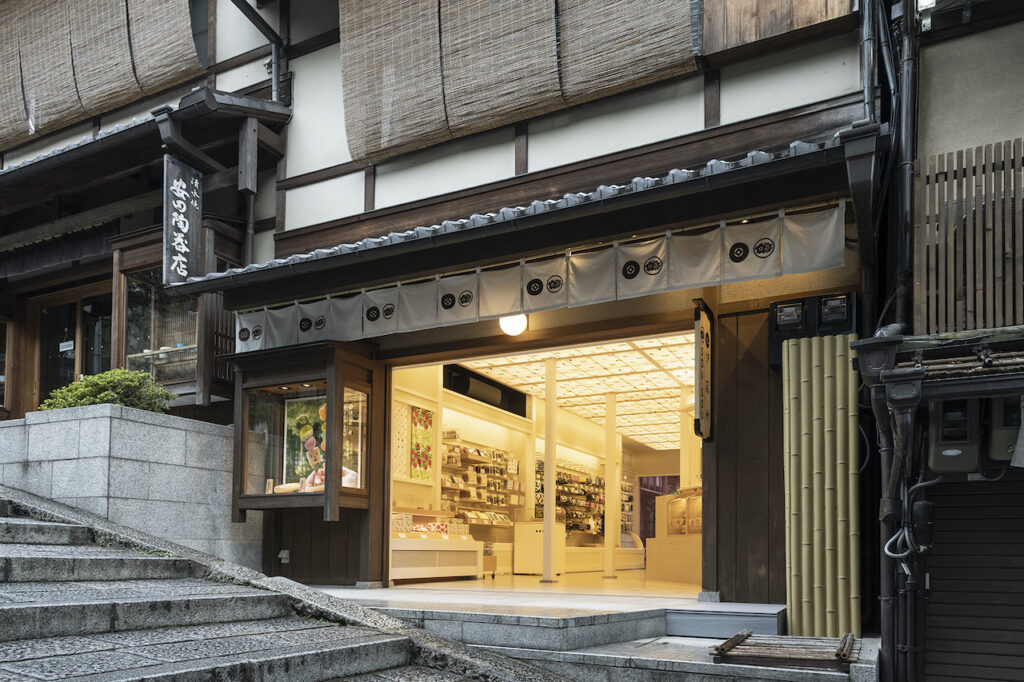
Photo courtesy of Itoken

Eating and drinking space/No
MAP ishere
Featuring a large logo, freshly fried croquettes and fried chicken are popular here. The yuba cream croquette, made with yuba from Kyoto, is filled with a thick, smooth cream. The karaage uses Kyoto-style dashi (soup stock) for a taste that is uniquely Kyoto. The best part of walking up Sanneizaka is being able to enjoy a freshly made karaage when you are hungry.
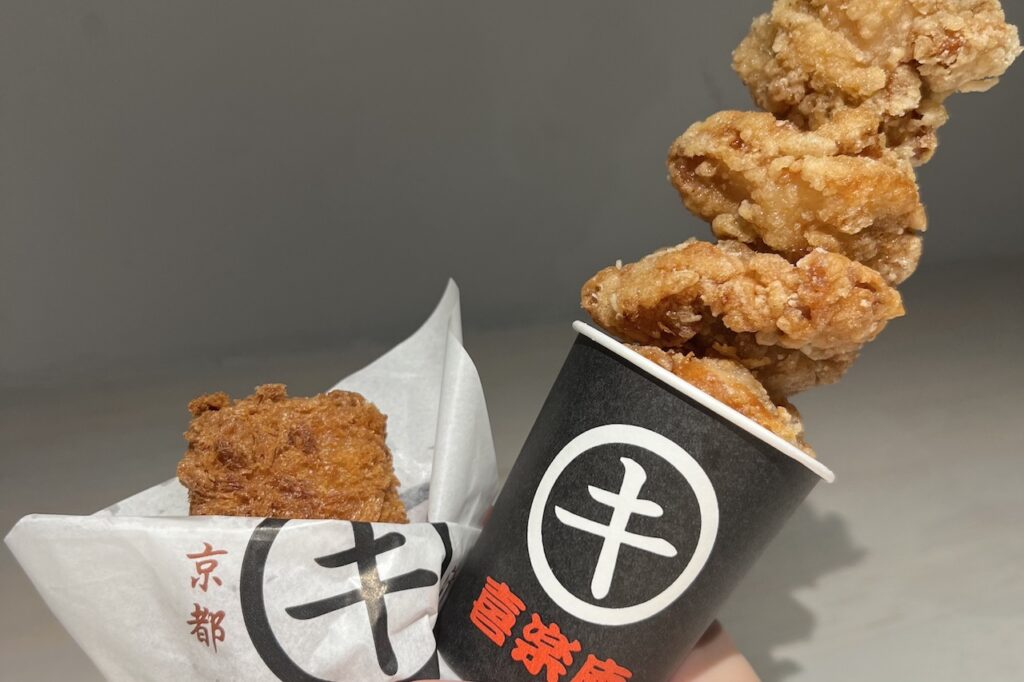
From left to right: Yuba cream croquettes, 250 yen; Kyoto-style dashi fried tofu, 550 yen for 5 pieces.


Photo courtesy of Kirakuan Okamoto, Sanneizaka Branch

Eating and drinking space: Yes
MAP ishere
[Located just a short walk from Yasaka Koshindo, Suishikutei's freshly made triple cheese menchikatsu is very popular. From the terrace seats on the second floor, you can enjoy a view of Yasaka Pagoda and enjoy Kyoto's unique atmosphere. The restaurant also offers a full drink menu, so relax and unwind between strolls.
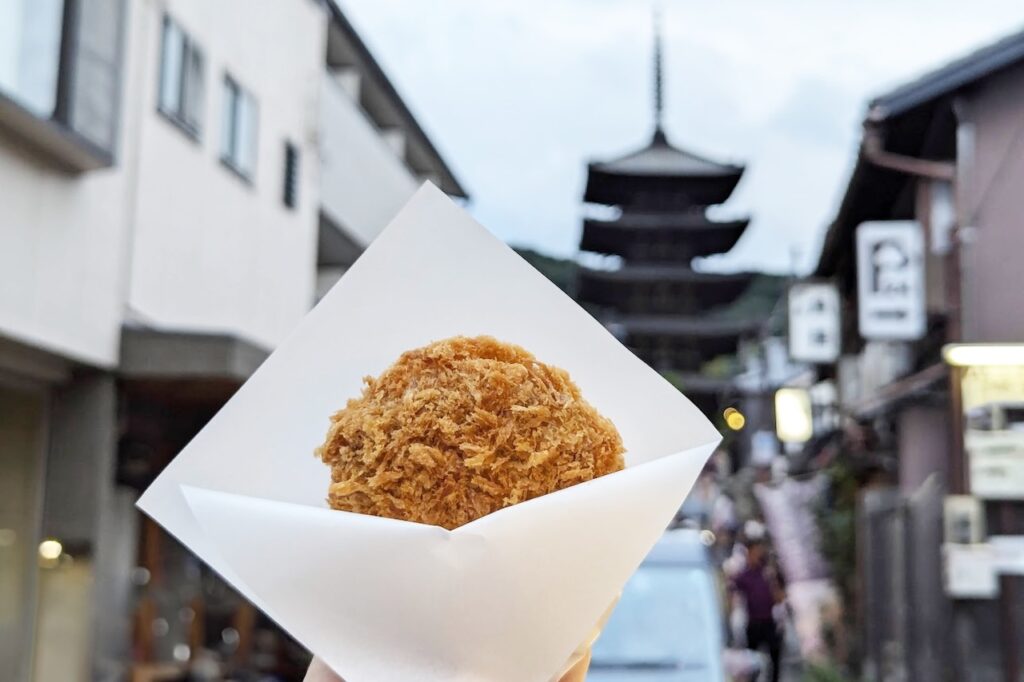
The most popular triple cheese menchikatsu is 400 yen.


Photo courtesy of Suishikutei

Eating and drinking space: Yes
MAP ishere
Sanneizaka (San-nenzaka)
Sannenzaka (Sanneizaka), with its emotional stone pavement, is a road leading from Kiyomizu-zaka to Ninneizaka, and is sometimes used as a filming location. It is said that the name "Sanneizaka" comes from the fact that many people used to pass through this slope to pray for safe delivery at Kiyomizu-dera Temple, and that Nene, the wife of Lord Toyotomi Hideyoshi, used to pray for safe delivery at Kiyomizu-dera Temple.
Ninenzaka (Ninenzaka)
Niningsaka, lined with cafes and stores using machiya townhouses, is popular as a photo spot for its elegant atmosphere. There are various theories as to the origin of its name, such as "because it is located in front of Sannenzaka (Sanneizaka)" or "because it was created in the 2nd year of Daido (807).
Ichinenzaka (One Year Hill)
Ichinenzaka is a narrow alley extending to the right from the intersection of several roads, including "Nene-no-michi" leading to Yasaka Shrine and Kodaiji Temple and "Ishin-no-michi" leading to Reizan Gokokujin Shrine in Kyoto. It is lined with old-fashioned buildings such as stores and private houses.
Kiyomizu-zaka (Higashiyama-cho, Iwate-ken)
Kiyomizu-zaka, which was created when Kiyomizu-dera Temple was built, became an important transportation route as a shortcut from Yamashina to the Tokaido Highway. As one approaches Kiyomizu-dera, the number of stores increases, and a variety of souvenirs are available. In spring and fall, the "Seiryu-kai" (Blue Dragon Festival) is held, in which a procession of about 18-meter-long seiryu (dragon) and a group of people dressed as gods and other deities parade through the temple.
Chawanzaka (Shimizu New Road)
It was named "Chawanzaka" after "Chawan-ya Kyubei," a man who became a wealthy merchant selling ceramics after the reconstruction of Kiyomizu Temple. Kiyomizu-yaki pottery shops are located here and are popular as souvenirs.
Asahi hill
Asahizaka, a small path connecting Kiyomizu-dera Temple to the east, Kiyomizu-zaka to the north, and Chawan-zaka to the south. Visitors can enjoy not only Kyo-yaki and Kiyomizu-yaki but also traditional crafts from all over Japan from every angle. As you walk up the hill, you can enjoy the view of Higashiyama (outside of Kyoto) to Nakagyo (in Kyoto) and Sakyo (in Kyoto).
If you actually walk around the area, you may come across some undiscovered hills and favorite stores. The slopes are not that steep, so feel free to enjoy a stroll.
Over 600 interviews per year! An order site carefully selected by the editors who knows Kyoto and Shiga.
nowOfficial LINE friend registration500 yen OFF coupon is being issued!
Distributed every Friday morning at 8:00 am! From new restaurant information to event information that we want to share with you, We deliver articles about Kyoto that are useful to know. About 20,000 people have registered.Click here to add a friend!
 News
News Feature article
Feature article Featured event
Featured event